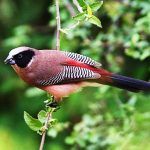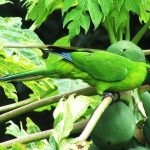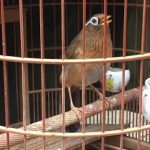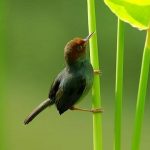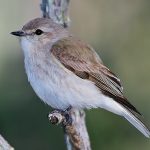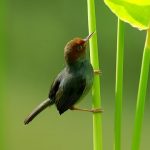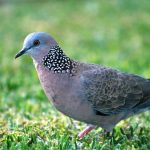Olive warbler
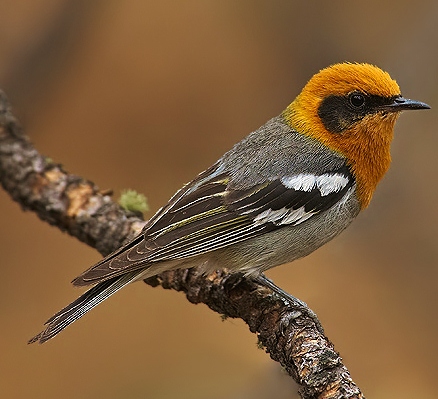
 |
| Photo by Robert Royse (Robert Royse’s Bird Photography) |
Common name:
olive warbler (en); mariquita-de-mascarilha (pt); fauvine des pins (fr); chipe oliváceo (es); trugwaldsänger (de)
Taxonomy:
Order Passeriformes
Family Peucedramidae
Range:
These birds are found from southern Arizona and New mexico, in the United States, through Mexico and down to Honduras and northern Nicaragua.
Size:
They are 12-14 cm long and have a wingspan of 20-24 cm. They weigh 9,5-12 g.
Habitat:
Olive warblers are mostly breed in high mountain pine and fir forests, generally over 2.600 m above sea level. During winter they move to lower altitudes, using pine forests but also in adjacent oak forests and sometimes even in palm stands.
Diet:
These birds are insectivorous, taking various insects picked from the branches and bark of trees.
Breeding:
Olive warblers breed in May-July. The nest is a compact cup made of moss, lichens and roots, placed on a branch in a tree, 10-25 m above the ground. The female lays 3-5 bluish-white eggs with olive spots, which she incubates alone for 12-13 days. The chicks are fed by both parents and fledge 9-10 days after hatching.
Conservation:
IUCN status – LC (Least concern)
This species has a large breeding range and a global population estimated at 2 million individuals. The population in the northern part of its range have undergone a small decline over the last 4 decades, but these represent less than half of the global population. Overall this species is not considered threatened at present.





